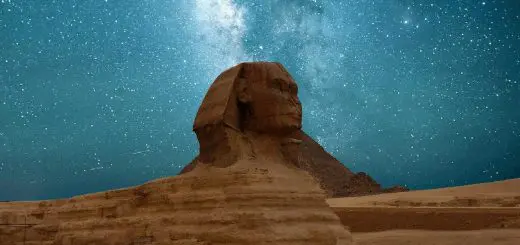The Future of the Universe: What Will Happen Next?

Looking for more amazing products? Check out our online store and explore our collection here! Happy shopping!
Before diving in, please note: This post is for informational purposes only. If you’d like to know more about how we approach topics, feel free to check out our friendly Disclaimer Page.
Hey there, amazing readers! 
We’re committed to delivering quality posts, and your support (even just sticking around despite the ads) means everything to us. So, bear with us, and thanks for helping us keep the good vibes rolling. Now, on to the fun stuff!
TRANSLATE BUTTON AT THE END OF THE ARTICLE
A Quick Overview
The future of the universe fascinates both scientists and dreamers alike.
As we gaze into the night sky, we can’t help but wonder what lies ahead in this vast expanse we call home.
Will the stars continue to shine, or will they one day fade away?
Through this article, we’ll embark on a cosmic journey, exploring the beginnings of the universe, the evolution of galaxies, the mysteries surrounding dark matter, and the potential end scenarios that could shape our destiny.
Buckle up as we navigate the cosmos!
Introduction: Embracing the Wonders of Cosmic Change
The universe is a tapestry woven with countless threads of time, events, and transformations.
It’s a magnificent dance of celestial bodies, where stars are born, live, and die.
Each moment in the universe is a chance for something extraordinary to occur.
The future of the cosmos is as uncertain as it is exciting.
Imagine standing in a field under a blanket of stars, sipping a warm beverage, pondering the universe’s fate.
It’s easy to feel small and insignificant, but remember, we are part of this grand story.
The universe has a history that shapes its future, and we’re just scratching the surface of understanding it.
Scientists use advanced tools and theories to piece together the puzzle of our cosmic existence.
They are constantly learning, adapting, and redefining what we think we know.
And that’s what makes the subject of our universe’s future so thrilling.
Every discovery opens up new questions.
As we move through this article, we’ll take a closer look at various elements that contribute to the universe’s fate.
Together, we’ll discover how the universe has changed over time and what exciting possibilities await us in the cosmic horizon.
The Big Bang: The Beginning of Our Cosmic Journey
To grasp the future, we need to understand where it all began—the Big Bang.
Picture this: about 13.8 billion years ago, the entire universe was concentrated into a single point, infinitely hot and dense.
Then, in an enormous explosion, it expanded, creating space as we know it.
This event marked the beginning of time and the birth of everything we see around us.
The early universe was a chaotic place filled with high-energy particles.
As it cooled, protons and neutrons formed, leading to hydrogen and helium—the building blocks of stars and galaxies.
The Big Bang Theory isn’t just a quirky idea; it’s backed by strong evidence.
One of the most convincing pieces is the cosmic microwave background radiation.
This faint glow fills the universe and is a remnant of the heat from the Big Bang.
Over the billions of years since, the universe has spread out and evolved.
It has given rise to an incredible array of structures—from galaxies and stars to solar systems and planets.
Each of these elements continues to evolve, driven by forces that govern their existence.
Explore the Path to Spirituality and Enlightenment – Start Here.
Understanding the Big Bang gives us a foundation to explore what’s next.
The universe has a history of transformation, and it’s poised for more changes in the future.
Galactic Evolution: Stars, Planets, and Beyond
Galaxies are the backbone of the universe.
They’re massive systems of stars, gas, dust, and dark matter, bound together by gravity.
The Milky Way, our galactic home, is just one of billions swirling through the cosmos.
But how do galaxies evolve, and what will happen to them?
Galaxies begin as clouds of gas and dust that collapse under gravity.
Over time, they clump together to form stars.
These stars can live for millions to billions of years.
As they age, they produce heavier elements, which are essential for forming planets and other celestial objects.
Our universe is not static; it’s a cosmic melting pot.
Galaxies collide, merge, and interact, reshaping their structures.
Think of it like a cosmic dance party—sometimes partners switch, and the music changes, leading to new formations.
As galaxies evolve, they also give birth to new stars and planetary systems.
This cycle of creation and destruction means that galaxies are always in flux.
One day, our Milky Way will collide with Andromeda, our nearest neighbor, shaping a new galactic structure in the process.
Looking ahead, galaxies will continue to evolve, merging and forming new stars for billions of years.
However, as dark energy drives the universe’s accelerated expansion, distant galaxies will drift away, becoming isolated in a vast cosmic sea.
Dark Matter and Dark Energy: The Universe’s Mysteries
When we delve into the future of the universe, we can’t ignore the enigmatic forces of dark matter and dark energy.
Though they make up approximately 95% of the universe, they remain elusive.
Dark matter is an invisible substance that doesn’t emit, absorb, or reflect light.
We can’t see it directly, but we know it’s there because of its gravitational effects.
It helps hold galaxies together, preventing them from flying apart.
Without dark matter, galaxies would be far less stable.
On the other hand, dark energy is even more mysterious.
It’s a force that seems to be driving the accelerated expansion of the universe.
Imagine blowing up a balloon.
At first, it expands slowly, but soon it starts to inflate rapidly.
Dark energy is like that, causing galaxies to drift apart faster over time.
So what does this mean for the future?
Understanding dark matter and dark energy is crucial.
They play a massive role in determining how the universe evolves.
If dark energy continues to dominate, we could see a universe where galaxies become increasingly isolated.
The mysteries surrounding these forces keep scientists pondering.
As humanity seeks to understand these cosmic puzzles, we hold the key to unraveling the universe’s fate.
The Life Cycle of Stars: From Birth to Supernovae
Stars are the heart of the universe.
They shine brightly, providing light and warmth to their surroundings.
But like all living things, stars have a life cycle—from birth to death.
Stars begin as clouds of gas and dust, known as stellar nurseries.
Under gravity’s influence, these clouds collapse, igniting nuclear fusion in their cores.
This process releases energy, causing the star to shine.
Stars live in different stages, depending on their mass.
Massive stars burn hot and bright but have shorter lifespans, while smaller stars like our Sun can live for billions of years.
Once a star exhausts its nuclear fuel, it enters its death throes.
For massive stars, this can result in a spectacular explosion known as a supernova.
This event is not just a grand finale; it also disperses heavy elements into space, enriching the cosmic medium.
These elements can then become part of new stars and planets, continuing the cycle of creation.
When considering the future, this stellar life cycle is fundamental.
For instance, our Sun will eventually exhaust its fuel, expanding into a red giant before shedding its outer layers.
This will leave behind a dense core known as a white dwarf.
The universe’s ability to continually create new stars from the remnants of old ones is a testament to its resilience.
Even as stars die, they give rise to new life, ensuring a cosmic rebirth.
Our Solar System: What Lies Ahead for Earth and Mars?
Our solar system is a tiny pocket of the universe, but it holds immense importance for us.
So, what does the future hold for our little corner of the cosmos?
Earth is in a stable orbit around the Sun, but as the Sun ages, its heat will increase.
In about a billion years, this warming could make our planet uninhabitable.
Water will evaporate, and life as we know it may cease to exist.
That’s a bit unsettling, isn’t it?
However, let’s turn our gaze to Mars!
As Earth warms up, Mars may become a more appealing option for human habitation.
Scientists are exploring ways to terraform the Red Planet, making it more Earth-like.
The asteroids, comets, and moons in our solar system also offer exciting possibilities.
They contain resources that could be mined or used for space exploration.
The future of human presence in space could very well rely on these celestial neighbors.
Looking further ahead, the Sun will eventually enter its red giant phase, engulfing the inner planets, including Earth.
But this won’t happen for another 5 billion years, so we have some time to enjoy our beautiful planet!
The future is uncertain, but the potential for exploration and discovery remains high.
Our solar system will continue to change, presenting new challenges and opportunities for those who come after us.
Cosmic Expansion: Understanding the Universe’s Growth
One of the most mind-boggling aspects of the universe is its expansion.
Since the Big Bang, the universe has been stretching out, creating more space between galaxies.
But what drives this expansion?
The answer lies in dark energy.
This mysterious force pushes galaxies apart, making the universe grow faster than ever.
Imagine blowing up a balloon; the more you blow, the larger it gets.
That’s kind of what’s happening out there!
As the universe expands, distant galaxies recede from us.
This phenomenon is called redshift.
The light from these galaxies shifts to longer wavelengths, which helps astronomers determine their speed and distance.
In the future, as dark energy continues to dominate, galaxies that are now visible may eventually vanish from sight.
They’ll drift away beyond the observable universe, leaving us with a more isolated cosmic landscape.
This expansion raises philosophical questions too.
What lies beyond the observable universe?
Is there an edge, or does it go on forever?
The mysteries of cosmic expansion remind us that our understanding is still evolving.
In summary, the universe’s expansion is a dynamic process with profound implications for its future.
It challenges us to think bigger, to imagine what lies beyond the stars, and to embrace the unknown.
Potential End Scenarios: Big Crunch vs. Heat Death
As we contemplate the future, it’s impossible to ignore potential end scenarios for the universe.
Two main theories dominate this discussion: the Big Crunch and heat death.
The Big Crunch posits that the universe could eventually stop expanding and start contracting.
All matter would pull together, leading to a collapse into a singularity—the opposite of the Big Bang.
Picture the universe reversing its growth, drawing everything back into one dense point.
It’s a haunting thought!
On the flip side, we have the heat death scenario.
In this vision, the universe continues to expand indefinitely.
Stars burn out, galaxies drift apart, and the cosmos becomes a cold, dark void.
Imagine a universe where nothing happens—just a vast silence.
Both scenarios offer a glimpse into the distant future, but the reality may be even more complex.
It’s possible that other factors could come into play, influencing the fate of the universe.
What’s fascinating is that our actions today could impact future generations.
As we explore and understand cosmic phenomena, we inch closer to answering these monumental questions.
The Role of Black Holes: Cosmic Powerhouses of Change
Black holes are some of the most intriguing objects in the universe.
Formed from the remnants of massive stars, they exert an immense gravitational pull that nothing—even light—can escape.
But what role do they play in the universe’s future?
Black holes can grow by consuming stars and interstellar material.
As they feed, they can release enormous amounts of energy, influencing their surroundings.
This energy can trigger star formation in nearby regions, showcasing their dual nature as both destroyers and creators.
Supermassive black holes are found at the centers of most galaxies.
Our Milky Way houses one known as Sagittarius A*.
These gigantic entities play a crucial role in galactic evolution, affecting the motion and formation of stars around them.
As we look ahead, black holes may also have a hand in the eventual fate of the universe.
In a universe dominated by dark energy, they could become increasingly isolated as galaxies drift apart.
However, black holes also raise intriguing questions.
What happens when they reach a certain mass?
Can they merge with one another, creating even larger black holes?
The answers remain unclear, adding to the allure of these cosmic enigmas.
In summary, black holes are not mere voids in space; they are powerful forces shaping the universe.
As we continue to study them, we gain insights into the cosmic dance of creation and destruction.
The Search for Extraterrestrial Life: Hope in the Cosmos
The question of whether we are alone in the universe is one that has captivated humanity for centuries.
As we explore the cosmos, the search for extraterrestrial life has become a crucial part of our journey.
Scientists are investigating the potential for life on other planets, particularly those in the habitable zone—regions around stars where conditions might be just right for life.
Mars and the icy moons of Jupiter and Saturn, like Europa and Enceladus, are prime candidates.
The discovery of exoplanets—planets outside our solar system—has further fueled our curiosity.
Thousands have been found, some located in their star’s habitable zone.
Who knows what discoveries await us in the coming years?
The search involves sending advanced telescopes and probes into space.
The more we explore, the more we realize how unique and diverse life can be.
We might find microorganisms, or perhaps something more complex.
Even if we don’t find intelligent life, our efforts may teach us more about our own existence.
Each mission, each discovery, brings us closer to understanding our place in the universe.
Ultimately, the search for extraterrestrial life is about hope and curiosity.
It reminds us that we are part of something much larger, a community of life that spans the cosmos.
Human Exploration: The Future of Space Travel Awaits
Human exploration of space is at a fascinating juncture.
From the Apollo moon landings to the Mars rover missions, we’ve made remarkable strides.
But what does the future hold for human space travel?
As technology continues to advance, the idea of colonizing other planets is becoming more tangible.
Mars is typically in the spotlight, but other celestial bodies, like moons and asteroids, also present opportunities.
Private companies are joining the effort, bringing innovative approaches to space travel.
With reusable rockets and ambitious projects, we may see humans traveling to Mars within a decade.
Imagine setting foot on the Red Planet—it’s electrifying!
Additionally, the future of space travel could involve more than just visiting other planets.
Imagine space tourism becoming a reality, with people booking trips to orbit Earth or even stay at space hotels.
However, there are challenges ahead.
Space is unforgiving, and we must find ways to protect astronauts, sustain life, and create a viable living environment beyond Earth.
Research into sustainable life support systems and radiation protection is ongoing.
The exploration of space is about curiosity, adventure, and the human spirit.
It’s a reminder that we can achieve remarkable things when we dream big.
Together, we can chart a course for the future!
Conclusion: A Cheerful Look at Infinite Possibilities
The future of the universe is a tapestry of possibilities, woven with curiosity, exploration, and discovery.
As we navigate this cosmic journey, we find ourselves at the intersection of understanding and wonder.
From the glorious birth of stars in the wake of the Big Bang to the mysterious forces of dark matter and dark energy, each aspect offers a glimpse into the universe’s fate.
The life cycles of stars remind us that death leads to new beginnings, while black holes challenge our understanding of gravity and cosmic structures.
As we gaze at the stars, we can’t help but wonder about extraterrestrial life and the potential for human exploration beyond our blue planet.
Each step we take into the cosmos brings us closer to answering our deepest questions.
In this grand adventure, it’s essential to embrace the unknown.
The universe is vast, and our story is just one of many.
Let’s approach the future with optimism and excitement, knowing that we are part of something greater than ourselves.
So, let’s keep looking up, my friends!
The universe has so much to offer, and the best is yet to come.

The Enlightenment Journey is a remarkable collection of writings authored by a distinguished group of experts in the fields of spirituality, new age, and esoteric knowledge.
This anthology features a diverse assembly of well-experienced authors who bring their profound insights and credible perspectives to the forefront.
Each contributor possesses a wealth of knowledge and wisdom, making them authorities in their respective domains.
Together, they offer readers a transformative journey into the realms of spiritual growth, self-discovery, and esoteric enlightenment.
The Enlightenment Journey is a testament to the collective expertise of these luminaries, providing readers with a rich tapestry of ideas and information to illuminate their spiritual path.
Our Diverse Expertise
While our primary focus is on spirituality and esotericism, we are equally passionate about exploring a wide range of other topics and niches 

To ensure we provide the most accurate and valuable insights, we collaborate with trusted experts in their respective domains 
Our blog originally focused on spirituality and metaphysics, but we’ve since expanded to cover a wide range of niches. Don’t worry—we continue to publish a lot of articles on spirituality! Frequently visit our blog to explore our diverse content and stay tuned for more insightful reads.
Hey there, amazing reader! 
Check out our store here and take a peek at some of our featured products below! Thanks for being awesome!











